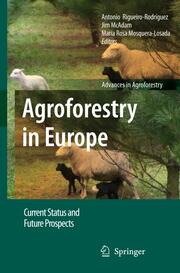Detailansicht
Agroforestry in Europe
Current Status and Future Prospects, Advances in Agroforestry 6
ISBN/EAN: 9789048178278
Umbreit-Nr.: 1129600
Sprache:
Englisch
Umfang: xxiv, 450 S., 14 farbige Illustr., 450 p. 14 illus
Format in cm:
Einband:
kartoniertes Buch
Erschienen am 20.11.2010
Auflage: 1/2010
€ 246,09
(inklusive MwSt.)
Nachfragen
